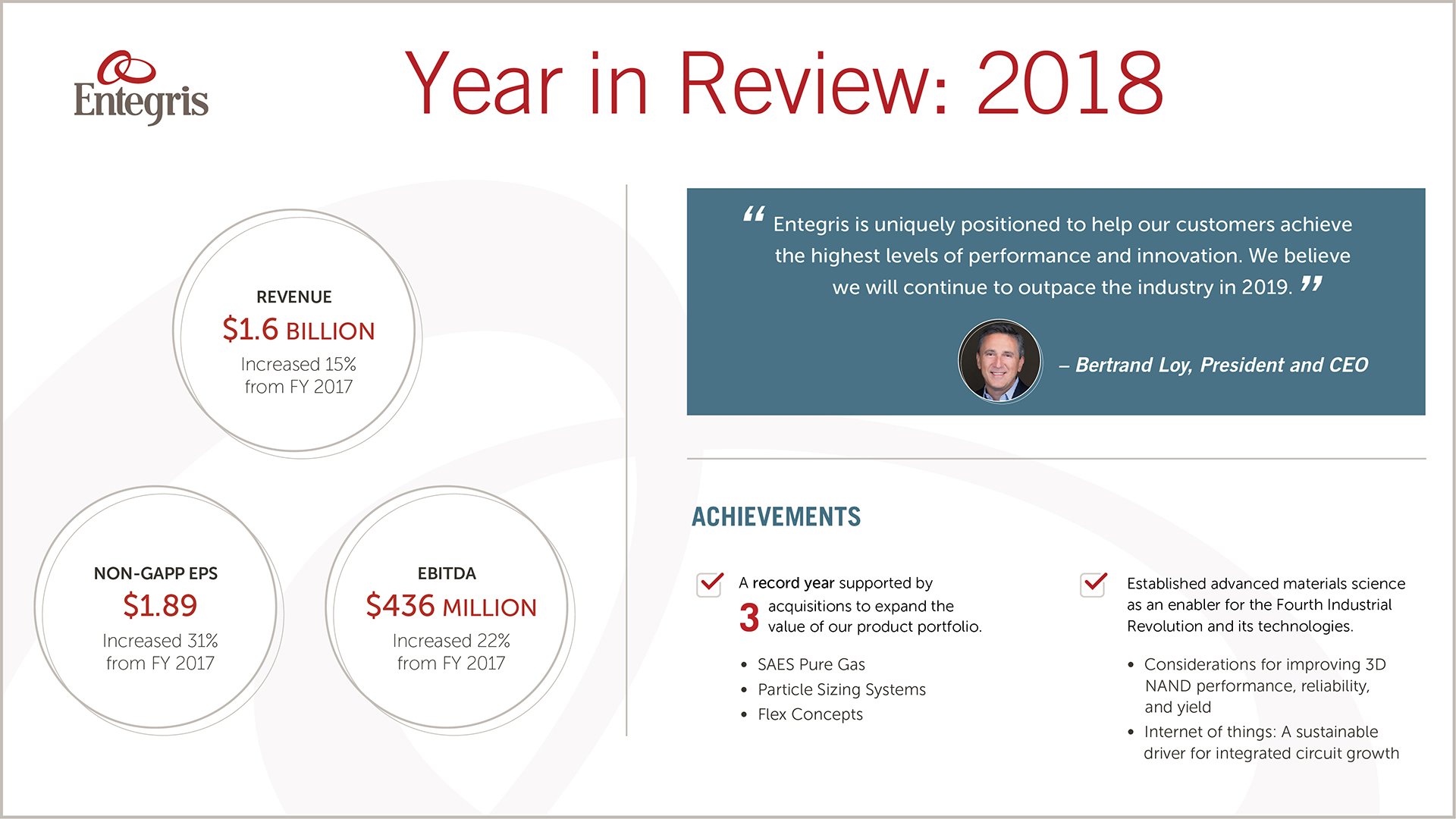We are proud of our accomplishments in 2018 and we are looking ahead to what we can achieve in 2019.
We brought on board three companies that helped expand our portfolio and impact on the technologies of the Fourth Industrial Revolution. Our great teams of scientists and engineers created solutions alongside our customers to help fuel innovation. And, most importantly, we helped the industry recognize the importance of advanced materials science in enabling the technologies of the future.
We are looking forward to 2019; a year we believe technology will take a back seat to science. New, advanced materials and the science behind the innovations that people depend on will be center stage.
We have a lot of work ahead of us but our team is ready for the challenges ahead and ready to push the industry to achieve standards never thought possible.

Visit our news page to learn more about our 2018 achievements and announcements.




